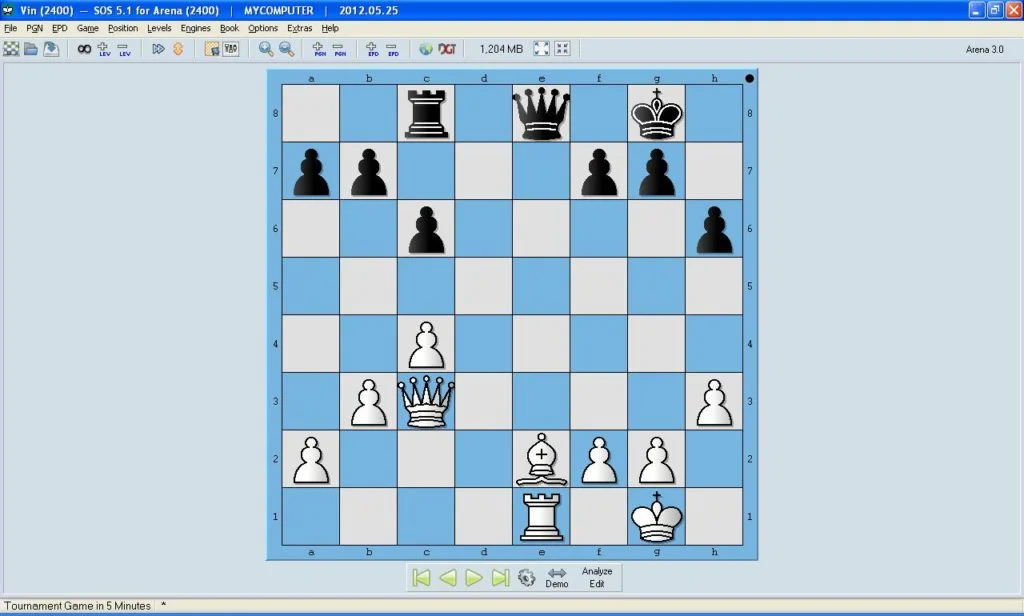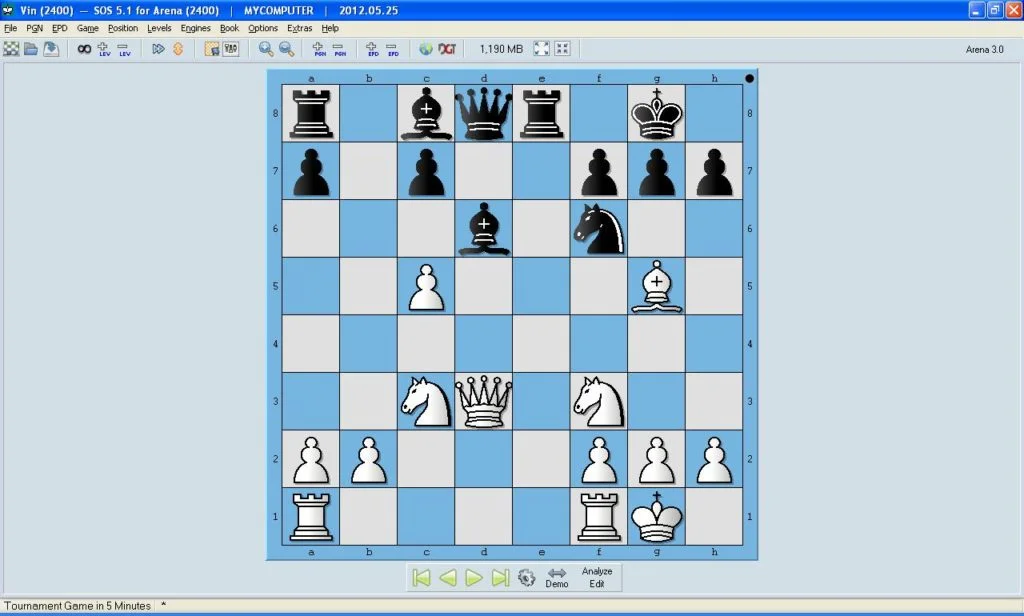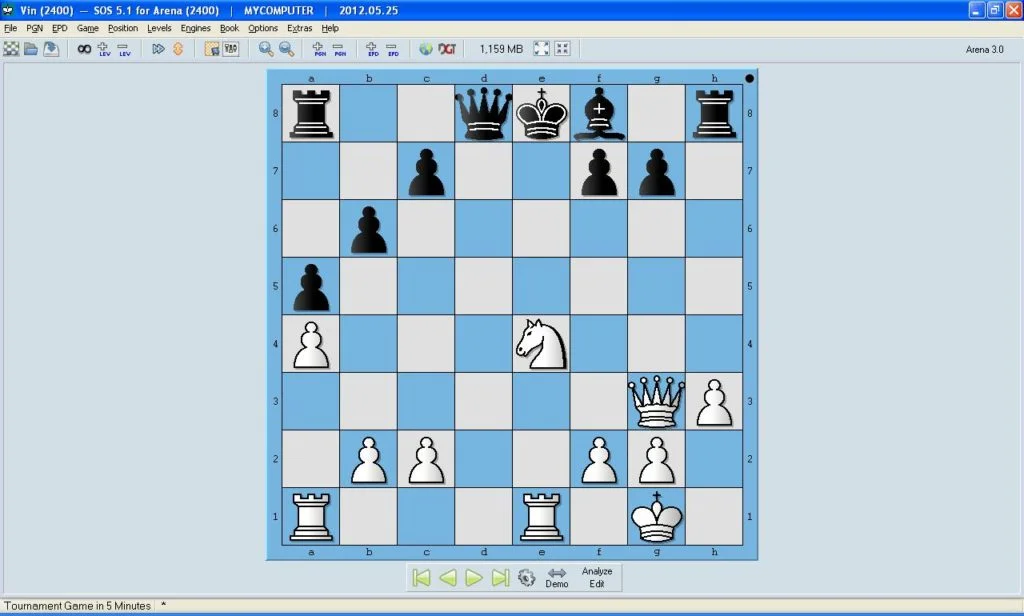In chess the discovered attack is one of the most important tactics. When we first begin playing chess we learn about simple threats. We attack one of our opponents pieces, and they defend. With a discovered attack we are creating two threats at one time. Since our opponent cannot defend against two attacks at the same time, we gain a material advantage. In a discovered attack a queen, rook, or bishop is positioned behind another piece. When that piece moves, it unleashes an attack. Let’s look at some examples to clarify.
In the above diagram it’s white’s turn to move. Notice how if white moves the bishop on e2, the white rook will attack blacks queen. There are a few moves at white’s disposal here, can you spot what the best one might be? Here the best move is Bg5! With this move white simultaneously attacks blacks queen and rook. Black has no choice but to lose material. Let’s keep studying this tactic because it’s incredibly important.
Here it’s blacks turn to move. White has just played dxc5 which was a major oversight. Here black plays 1. …Bxh2+! and white immediately resigned. Since white is forced to deal with the check, black will then play Qxd3 winning whites queen. Notice how in both of the above cases the bishop moved and created a powerful threat. Because of this, the piece that it uncovered was free to capture the enemy piece. When the piece that moves is able to check the enemy king, the discovered attack is even more powerful.
The most powerful form of discovered attack is the double check. This is extremely strong because it checks the enemy king with two pieces. When a king is in double check it is forced to move, as there is no other way to get out of check. Let’s see what this looks like in practice.
Here it’s white’s turn to move. We can see that the knight on e4 has several squares where it can move, unleashing the rook to give check. In this case however white can give double check by moving his knight to either f6 or d6. Here white plays 1. Nf6++ and gives double check and mate. Can you see why this move is superior to Nd6?
I hope you enjoyed this post! In the next part of our series we will discuss double attacks and forks.





